17 Most Common Tea Tree Types (With Pictures to Identify)
Tea tree is native to China and parts of Asia, but it's now being grown in many other countries as well. Each type of tea tree has its own unique characteristics, flavors, and health benefits. In this article, we'll introduce you to the 17 most common tea tree types and provide pictures to help you identify them.
The most common tea trees include Camellia sinensis, the New Zealand tea tree, Cajuput tree, broad, flax- and-narrow-leaved paperbark, Punk tree, Snow-in-summer and lemon-scented tea tree, Manuka tree, White tea tree, Taxandria parviceps, European, Duke of Argyll's, weeping, yellow, and coast tea tree.
Camellia sinensis, also known as Thea sinensis, is the most well-known and widely cultivated tea tree species. It is an evergreen shrub that can grow up to 9 meters tall if left unpruned. If you're interested in knowing the unique characteristics of each tea tree, stay tuned.
Summary
- The leaves of Camellia sinensis contain compounds such as polyphenols, catechins, and caffeine, which contribute to the flavor, aroma, and health benefits of the tea.
- The Melaleuca linariifolia is well-adapted to fire-prone environments due to its fire-retardant papery bark, making it a popular choice for revegetation projects.
- Melaleuca cajuputi is known for producing cajuput oil, which is derived from its leaves and twigs through steam distillation and has a camphoraceous aroma used for its antiseptic, analgesic, and expectorant properties.
- Tea tree species such as Leptospermum lanigerum and Leptospermum laevigatum are well-suited for coastal environments and can serve practical purposes such as stabilizing sand dunes and preventing erosion.
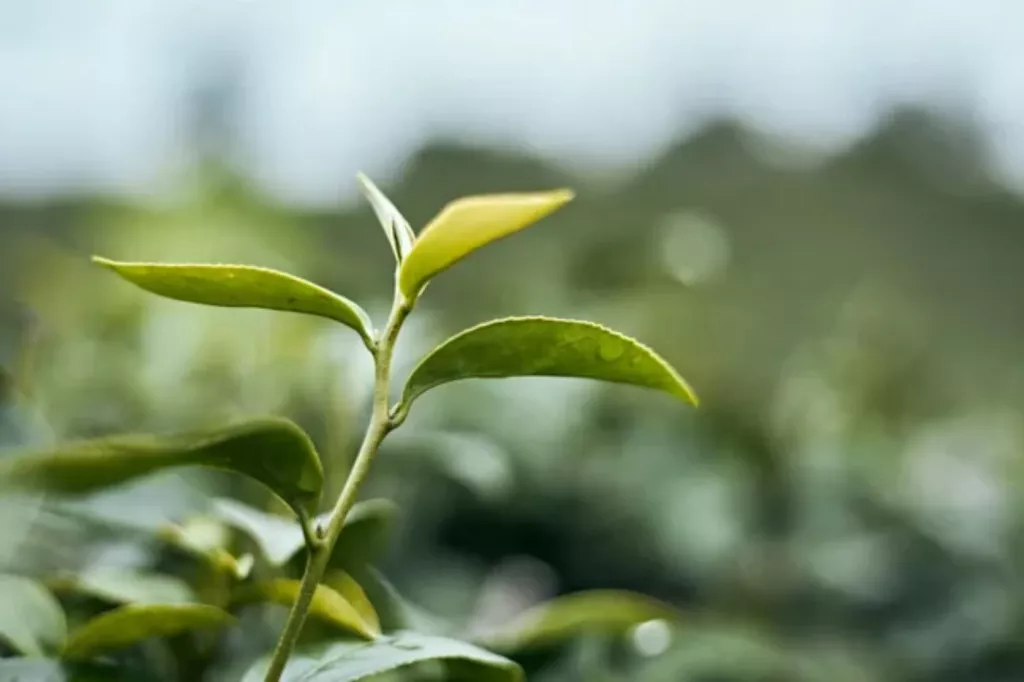
On this page:
Common Types of Tea Trees
There are several types of tea trees, each with its own unique characteristics, and they include the following:
| Latin Name | Common Name | Unique Characteristics | Common Growing Regions |
|---|---|---|---|
| Camellia sinensis | Thea sinensis | Source of tea leaves for tea production | Asia, Africa, South America |
| Melaleuca linariifolia | Flax-leaved paperbark | Often used for landscape due to its ornamental value | Eastern Australia |
| Melaleuca cajuputi | Cajuput tree | Produces cajuput oil used in traditional medicine | Southeast Asia, Australia |
| Melaleuca leucadendra | Punk tree | Wood used for making musical instruments and traditional medicine | Australia, Southeast Asia |
| Leptospermum scoparium | New Zealand tea tree | Ornamental shrub with small white flowers | New Zealand, Australia |
| Leptospermum lanigerum | Snow-in-summer tea tree | Ornamental shrub with snow-like flowers | Australia, New Zealand |
| Leptospermum petersonii | Lemon-scented tea tree | Source of lemon-scented essential oil | Australia |
| Leptospermum ericoides | Manuka tree | Source of manuka honey with medicinal properties | New Zealand, Australia |
| Kunzea ericoides | White tea-tree | Ornamental shrub with white flowers | Australia |
| Taxandria parviceps | Fine tea tree | Has pleasant aromatic foliage and masses of small white flowers | West coast of West Australia |
| Lycium europaeum | European teatree | Ornamental shrub with red berries | Europe, Asia |
| Lycium barbarum | Duke of Argyll's Tea Tree | Source of goji berries with nutritional benefits | Asia, Europe, North America |
| Melaleuca quinquenervia | Broad-leaved paperbark | Source of paperbark used in traditional medicine | Australia, New Guinea |
| Melaleuca alternifolia | Narrow-leaved paperbark | Source of paperbark used in traditional medicine | Australia, New Guinea |
| Leptospermum madidum | Weeping tea tree | Ornamental shrub with weeping habit | Australia |
| Leptospermum polygalifolium | Yellow tea tree | Ornamental shrub with small white flowers | Australia |
| Leptospermum laevigatum | Coast tea tree | Coastal shrub with small white flowers | New Zealand, Australia |
Camellia sinensis is the most well-known tea tree
(Thea sinensis)

Camellia sinensis, also known as Thea sinensis, is the most well-known and widely cultivated tea tree species. It is an evergreen shrub that can grow up to 9 meters tall if left unpruned.
This species is native to China but is now grown in many other countries, including India, Sri Lanka, and Kenya.
There are several varieties of this plant which are cultivated for different types of tea, including green tea, black tea, white tea, and oolong tea. The differences in these types of tea are primarily due to variations in processing methods and the level of oxidation the leaves undergo.
The leaves of Camellia sinensis are glossy and dark green, with serrated edges, and contain compounds such as polyphenols, catechins, and caffeine, which contribute to the flavor, aroma, and health benefits of tea.
These compounds also have antioxidant properties and are believed to offer various health benefits, including potential protection against certain diseases.
Melaleuca linariifolia is adapted to fire-prone environments
(Flax-leaved paperbark)
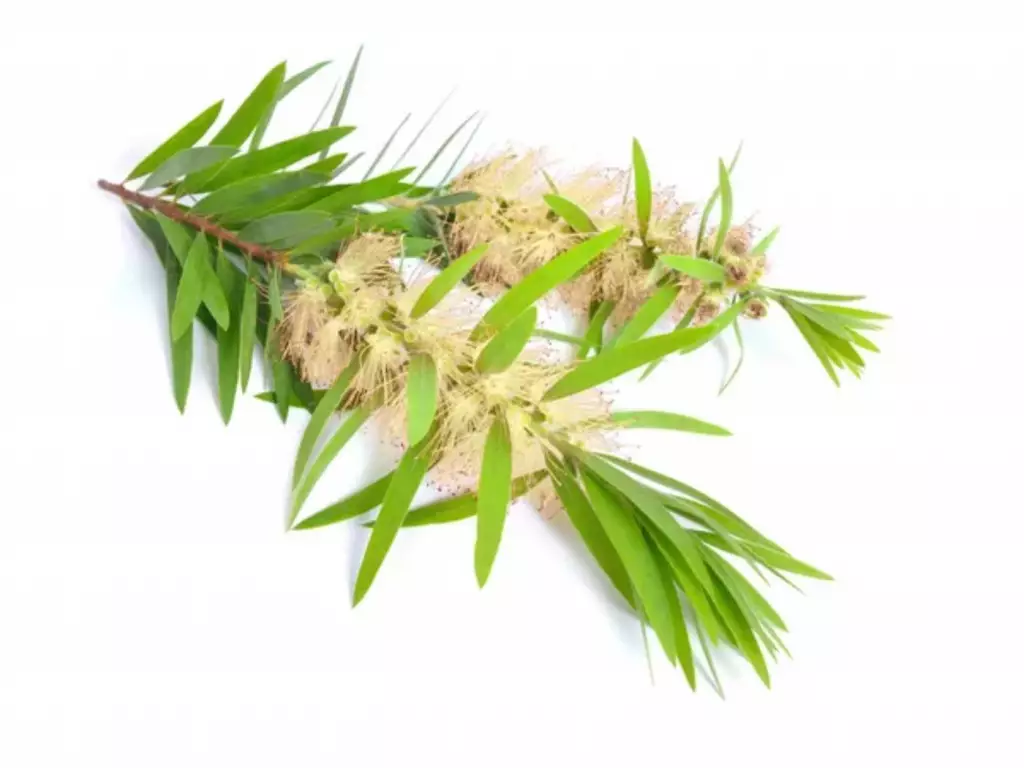
Melaleuca linariifolia, commonly known as the flax-leaved paperbark, is a plant species in the myrtle family, Myrtaceae. It is native to eastern Australia and is often used in landscaping and for its ornamental value.
However, it is not the primary source of tea tree oil, but rather known for its attractive foliage, papery bark, and delicate white flowers, making it a popular choice for landscaping and revegetation projects.
The flax-leaved paperbark typically grows to a height of 5-10 meters, with a slender and erect trunk that is often twisted or gnarled.
The leaves are narrow, linear, and up to 6 centimeters long, resembling those of flax plants, hence the common name. The bark is a distinctive feature of the tree, with a papery texture that peels away in thin layers, revealing smooth, pale bark underneath.
This characteristic bark provides interest and texture in the landscape, and also serves as a fire retardant, making the tree well-adapted to fire-prone environments.
The tree produces small, white, bottlebrush-like flowers in clusters at the ends of its branches. These flowers are highly attractive to bees and other pollinators, and they bloom in late spring to early summer, adding a splash of color to the tree.
Melaleuca cajuputi produces the cajuput oil
(Cajuput tree)

Melaleuca cajuputi, also known as the cajuput tree, is a species of tree that is native to Southeast Asia and Australia. It is an evergreen tree that can grow up to 20 meters tall.
The leaves of the cajuput tree are long and narrow, with a strong aroma when crushed. This species is often used in traditional medicine for its antibacterial and antifungal properties.
One of the most significant uses of the cajuput tree is the extraction of its essential oil. Cajuput oil is derived from the leaves and twigs of the tree through a process of steam distillation.
The oil has a fresh, camphoraceous aroma and is known for its antiseptic, analgesic, and expectorant properties. It has been traditionally used to treat respiratory conditions such as coughs, colds, and bronchitis.
Additionally, cajuput oil is used topically to relieve minor aches and pains, and it is a common ingredient in liniments and ointments.
Melaleuca leucadendra has distinctive papery bark and aromatic leaves
(Punk tree)
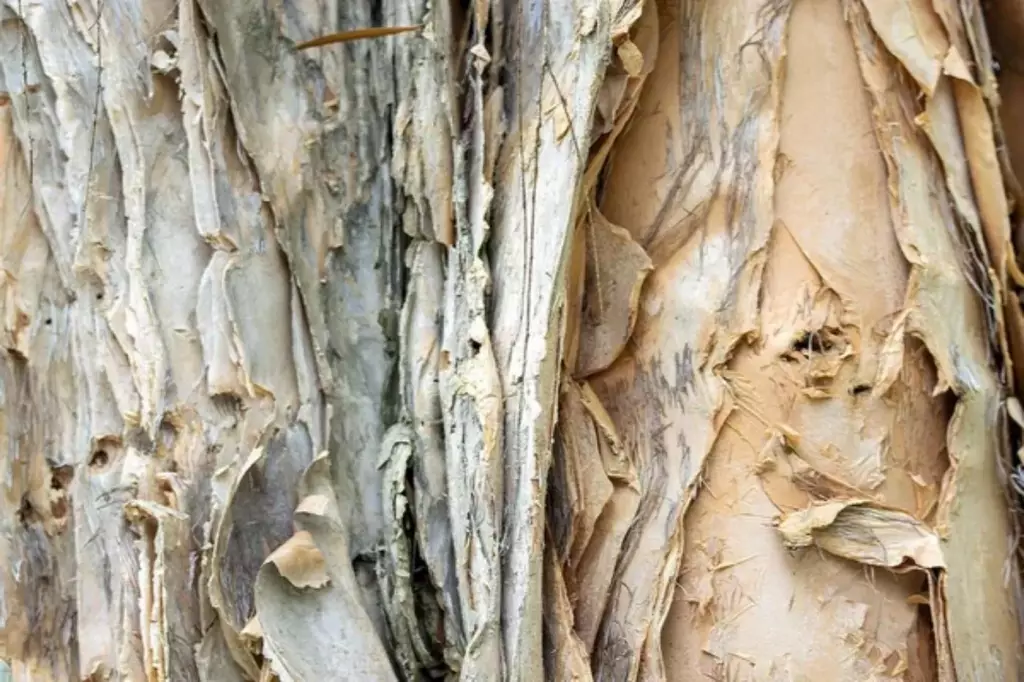
Melaleuca leucadendra, commonly known as the punk tree, is a species of tree in the myrtle family, Myrtaceae. It is native to Australia, Southeast Asia, and the Pacific Islands. The punk tree is known for its distinctive papery bark, aromatic leaves, and its various traditional and modern uses.
It is a tall, evergreen tree that can reach heights of up to 30 meters. It has a characteristic white to creamy-gray, spongy bark that peels off in thin layers, giving it a unique appearance.
The leaves are narrow, lance-shaped, and release a pleasant, camphor-like fragrance when crushed. The tree produces small, white, bottlebrush-like flowers that are attractive to bees and other pollinators.
It is naturally found in swampy or marshy areas, and it is well adapted to wet soils and periodic flooding. It has been widely planted in reforestation and land reclamation projects due to its ability to thrive in waterlogged conditions and its potential for stabilizing soil in wetland areas.
In modern times, Melaleuca leucadendra is valued for its essential oil, which is popular in aromatherapy and natural medicine.
The oil is believed to have antiseptic, anti-inflammatory, and antimicrobial properties, and it is used in a variety of topical and aromatic applications. The wood of the punk tree is also used in woodworking and for making paper and pulp.
Leptospermum scoparium has small needle-like aromatic leaves
(New Zealand tea tree)
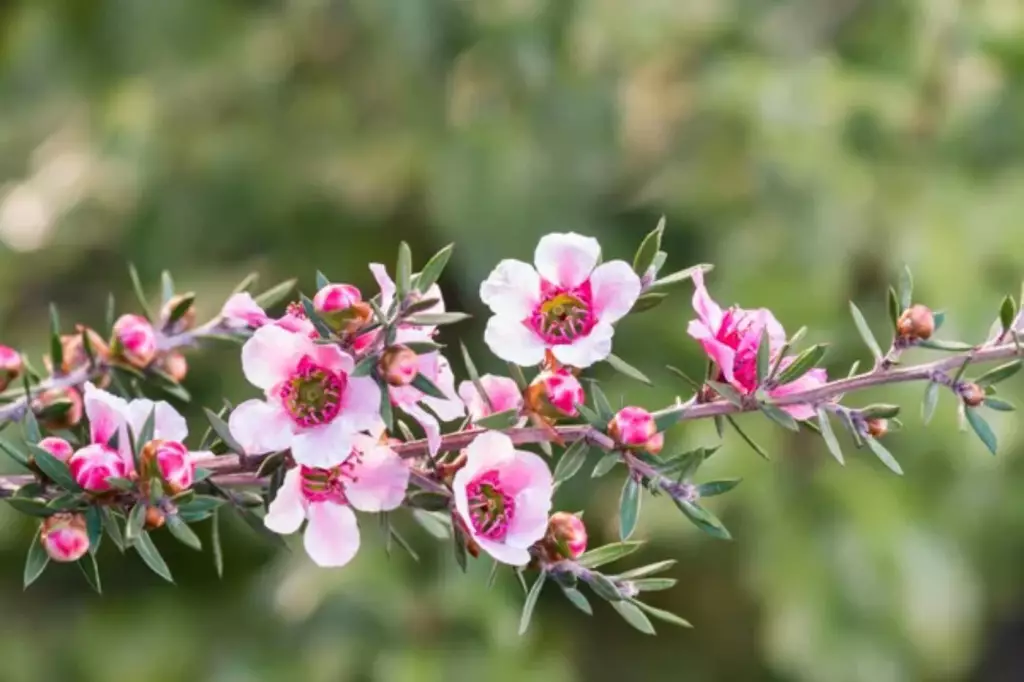
Leptospermum scoparium, commonly known as the New Zealand tea tree, is a species of shrub native to New Zealand and southeast Australia.
It is an evergreen shrub that typically grows to a height of 2-5 meters, although some varieties can reach up to 15 meters. It has small, needle-like leaves that are often aromatic when crushed.
The flowers of Leptospermum scoparium are a prominent feature, with a wide range of colors including white, pink, and red. They are typically about 1 cm in diameter and have five petals, giving the plant a visually striking appearance when in bloom.
In its natural habitat, Leptospermum scoparium is commonly found in coastal areas, forests, and scrublands. It is well adapted to a variety of soil types and can tolerate both drought and wet conditions.
Leptospermum lanigerum is relatively drought-tolerant
(Snow-in-summer tea tree)
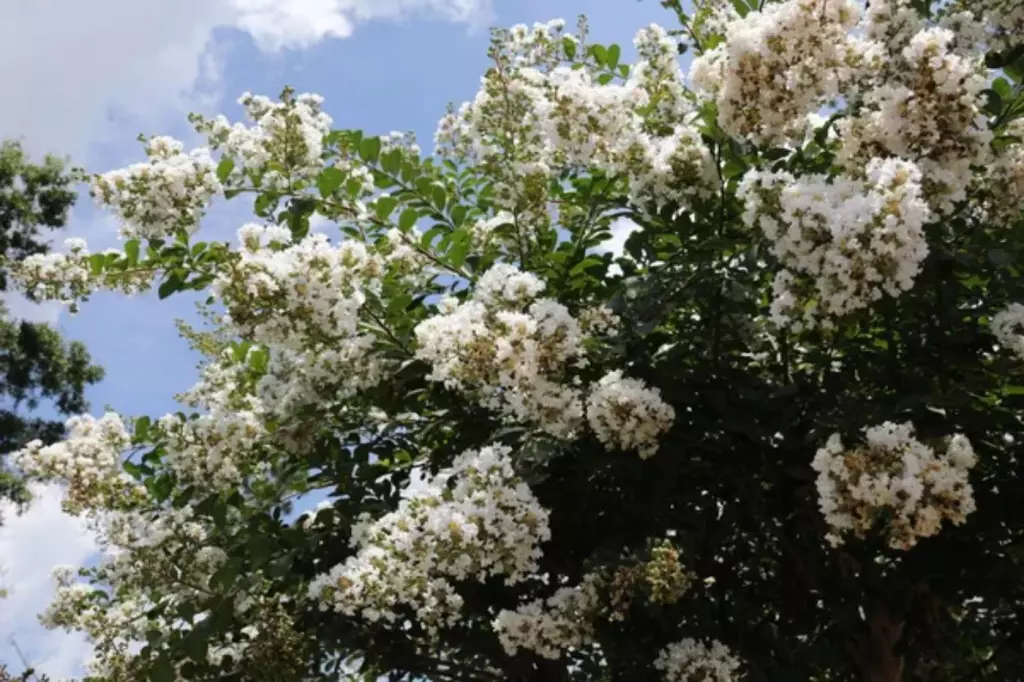
Leptospermum lanigerum, also known as the snow-in-summer tea tree, is a species native to Australia. It is an evergreen shrub that can grow up to 3 meters tall.
The leaves of the snow-in-summer tea tree are small and needle-like, and the tree has white or pink flowers. This species is often used in landscaping for its attractive flowers.
The snow-in-summer tea tree is well-suited to coastal areas and can tolerate a range of soil types, including sandy and clay soils. It is also relatively drought-tolerant once established, making it a low-maintenance option for gardens and public spaces.
In terms of cultivation, it prefers a sunny position and well-drained soil. It also responds well to light pruning after flowering to maintain a compact shape and encourage bushy growth.
Leptospermum petersonii releases a pleasant lemon scent when crushed or brushed against
(Lemon-scented tea tree)
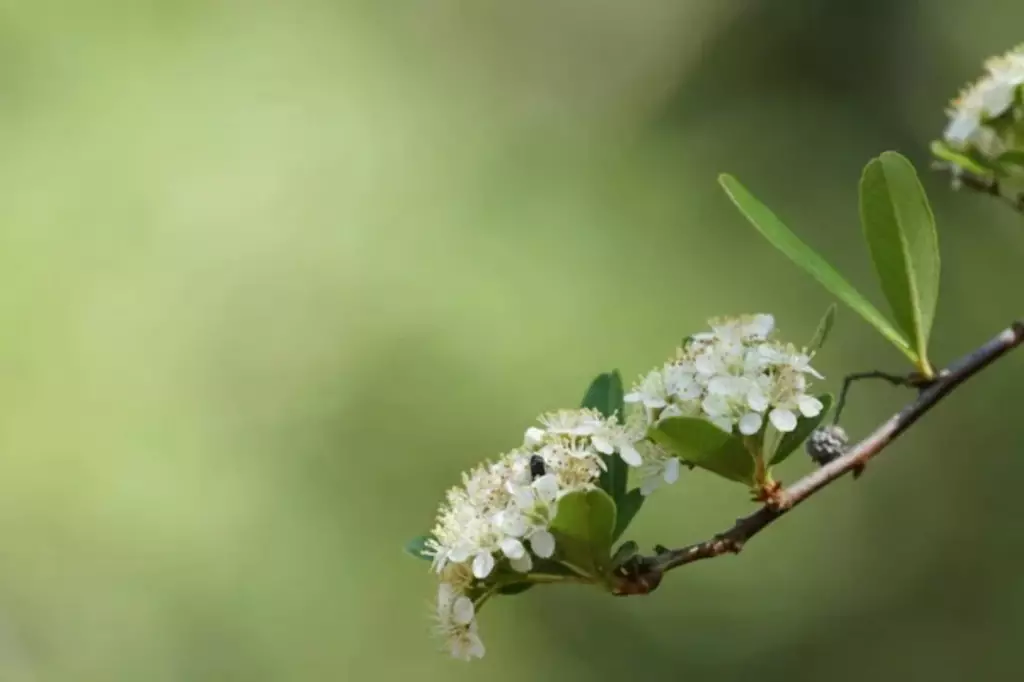
Leptospermum petersonii, commonly known as lemon-scented tea tree, is a species of shrub or small tree that belongs to the Myrtaceae family. It is native to Australia and is known for its aromatic leaves, which release a pleasant lemon scent when crushed or brushed against.
This characteristic aroma has led to its use in various applications, including horticulture, landscaping, and the production of essential oils.
This tree typically grows in a variety of habitats, ranging from wet sclerophyll forests to dry woodlands. It is a hardy plant that can tolerate different soil types and is well-suited to both coastal and inland conditions.
The plant produces small white flowers with prominent stamens, which attract bees and other pollinators. These flowers give way to small woody capsules containing numerous tiny seeds.
Leptospermum petersonii is also valued for its essential oil, which is extracted from the leaves through steam distillation. The oil is known for its strong lemon fragrance and is used in aromatherapy, perfumery, and as a natural insect repellent.
It is also believed to have antibacterial and antifungal properties, making it a popular ingredient in natural skincare and cleaning products.
Leptospermum ericoides is best known for its association with manuka honey
(Manuka tree)
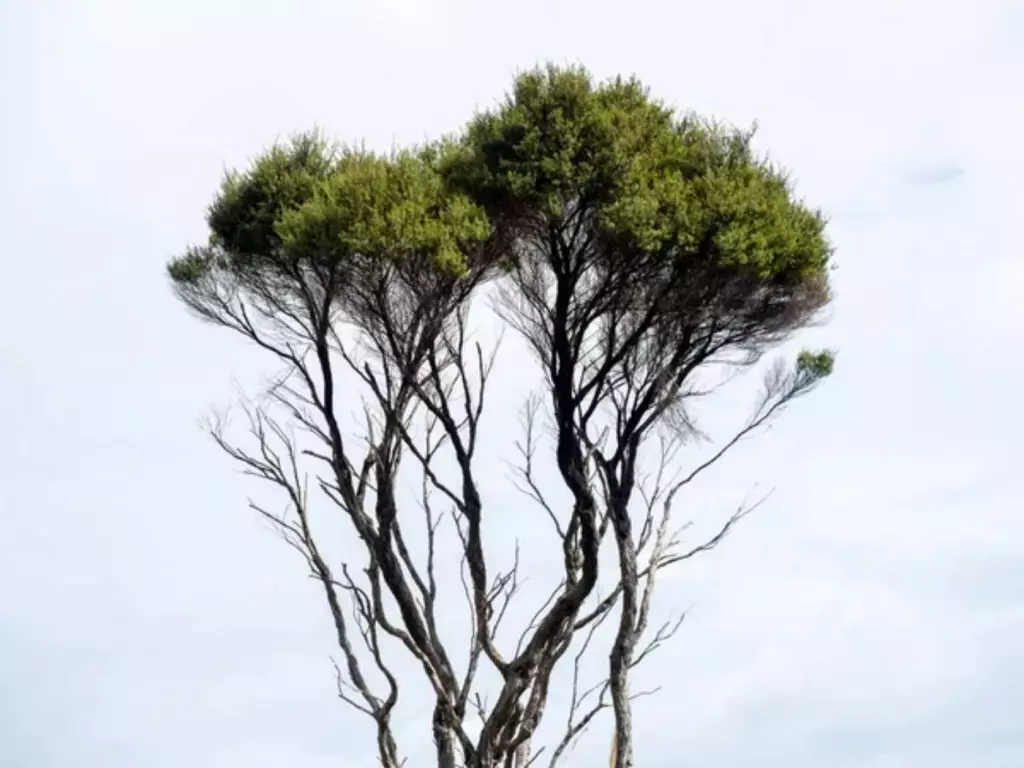
Leptospermum ericoides, commonly known as the Manuka tree, is a species of shrub or small tree that is native to New Zealand and southeastern Australia.
Ecologically, the Manuka tree plays a vital role in its native habitats. It is often found in coastal areas, forests, and scrublands, and it is well-adapted to a range of soil types.
From a commercial perspective, the Manuka tree is perhaps best known for its association with Manuka honey. This unique type of honey is produced by bees that gather nectar from the Manuka tree's flowers.
Manuka honey is highly valued for its purported health benefits and is sought after for its antibacterial properties. The Manuka tree's essential oil is also used in aromatherapy and skincare products.
Kunzea ericoides
(White tea tree)
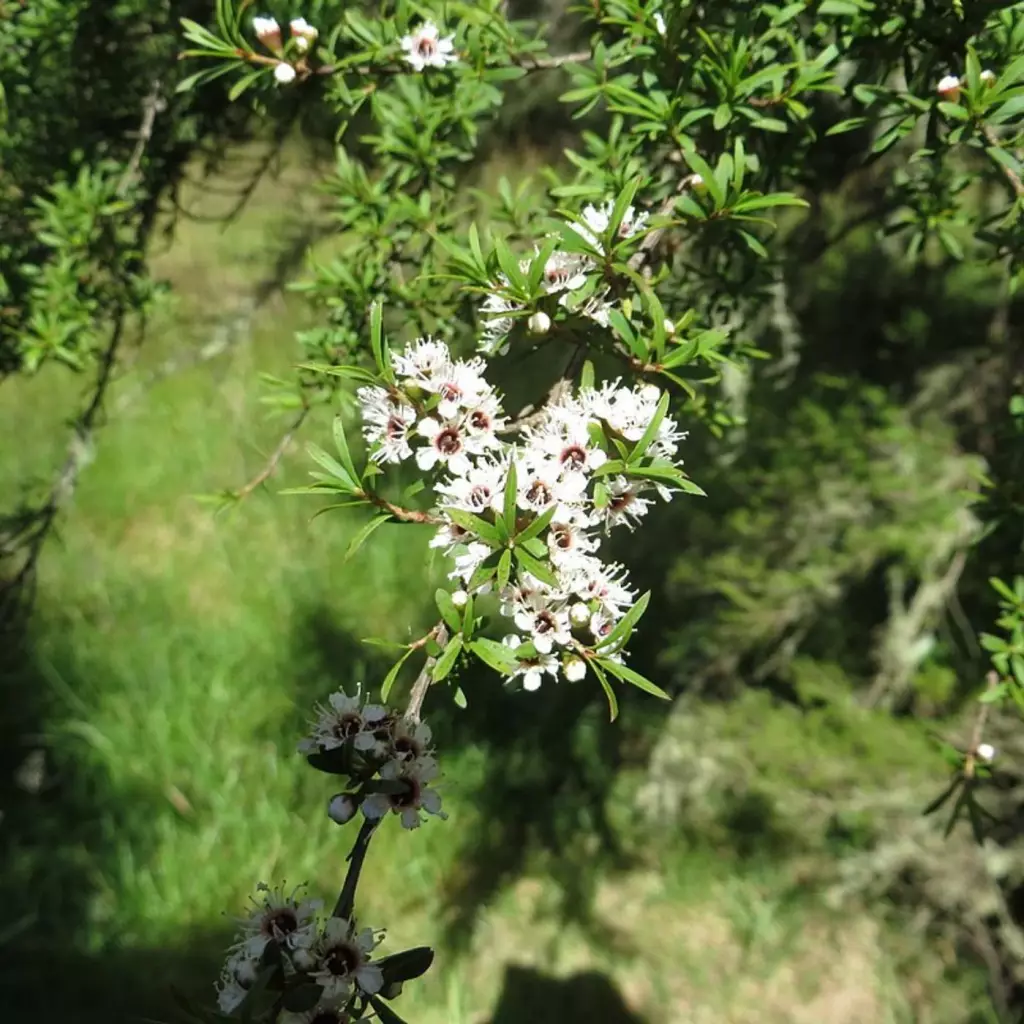
Kunzea ericoides, also known as the white tea tree, is a flowering plant native to New Zealand. It is a member of the Myrtle family and is characterized by its small, white, star-shaped flowers and aromatic foliage.
The plant is often found in coastal and mountainous regions and is valued for its ornamental beauty and its essential oils, which are used in traditional medicine and aromatherapy.
In addition, the white tea tree has cultural significance for the Māori people of New Zealand, who have historically used its leaves and flowers for various medicinal and ceremonial purposes.
Taxandria parviceps is renowned for its pleasant aromatic foliage
(Fine tea tree)
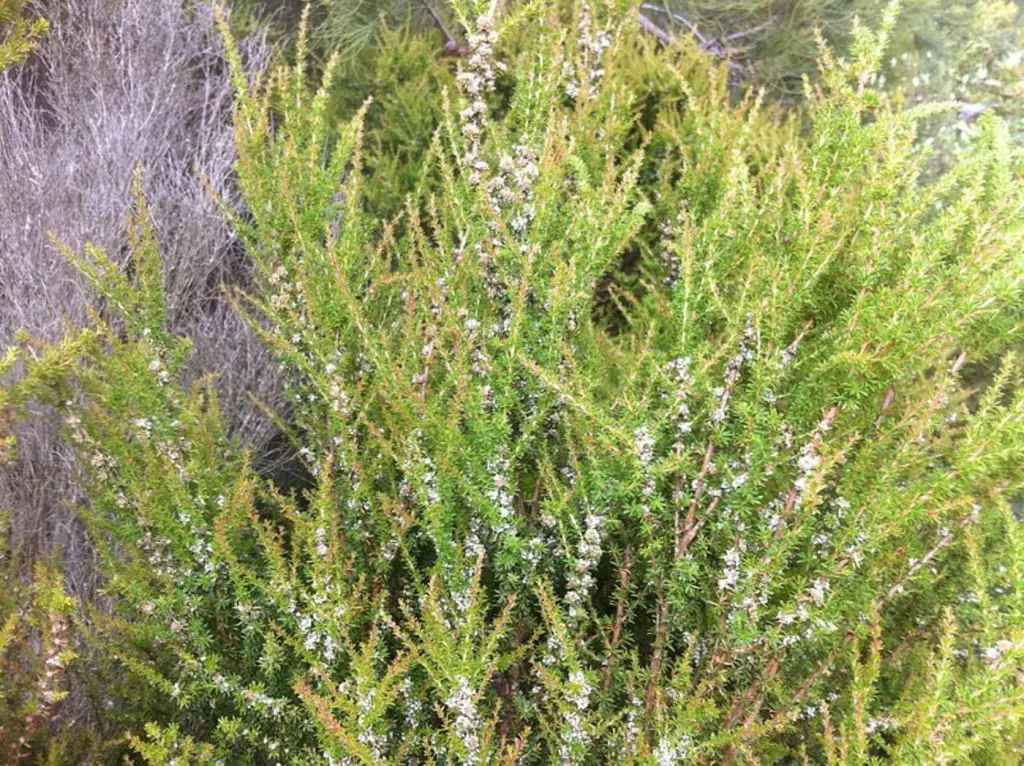
Taxandria parviceps, commonly known as the fine tea tree, is a delightful plant native to the west coast of Western Australia. This species is renowned for its pleasant aromatic foliage and abundant small white flowers, making it a popular choice for ornamental gardens and landscaping.
This tree belongs to the Myrtaceae family and is a small shrub that typically grows to a height of around 1-2 meters. It is characterized by its slender, aromatic leaves that exude a pleasant fragrance when crushed or brushed against.
The foliage adds a refreshing and invigorating scent to the surrounding environment, making it a favored choice for aromatic gardens. It also produces an abundance of small white flowers, which create a stunning visual display when the plant is in bloom.
Their natural habitat is the west coast of Western Australia, where it thrives in well-drained soils and enjoys a sunny or partially shaded position.
It is well adapted to the coastal conditions of its native range, making it a suitable choice for gardens in similar coastal or Mediterranean climates.
Lycium europaeum is known for its striking red berries
(European tea tree)
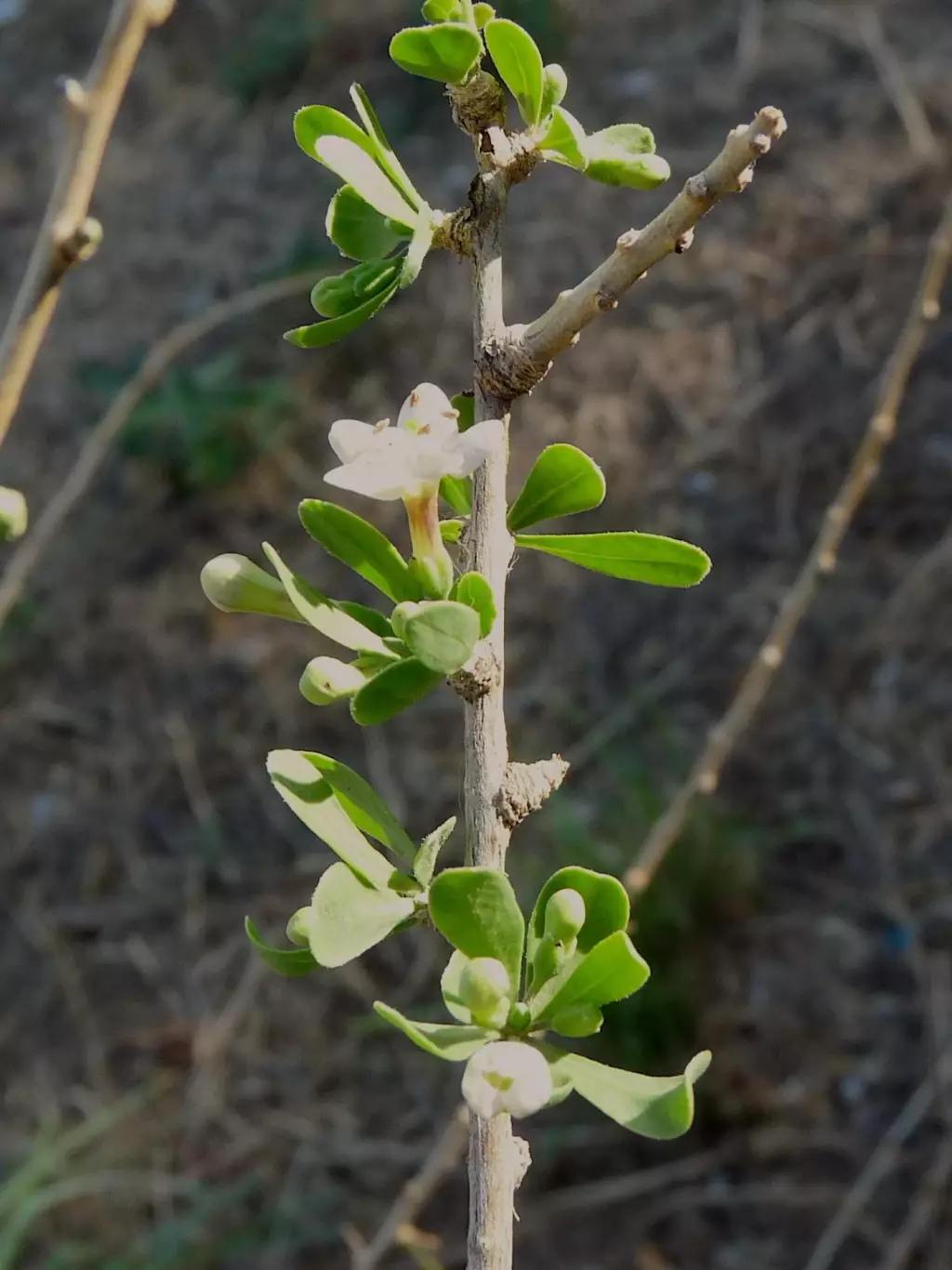
Lycium europaeum, commonly known as the European tea tree, is an ornamental shrub that is well-regarded for its striking red berries.
This plant is native to Europe and Asia, where it can be found in various habitats including dry, rocky slopes and open woodlands.
It is a deciduous shrub that typically grows to a height of about 1-2 meters. It is characterized by its slender, arching branches and small, lance-shaped leaves that are a grayish-green color.
The plant produces delicate, tubular, purple flowers that give way to the vibrant red berries for which it is prized.
This tree is relatively low-maintenance and can thrive in a variety of soil types, as long as they are well-drained. It prefers full sun and is tolerant of drought once established, making it a suitable choice for xeriscaping and water-wise landscaping.
Additionally, the European tea tree is known for its ability to attract wildlife, particularly birds that are drawn to its colorful berries.
The berries of this tree are rich in antioxidants and have been utilized in herbal remedies for their purported immune-boosting and anti-inflammatory properties.
Lycium barbarum produces goji berries
(Duke of Argyll's tea tree)
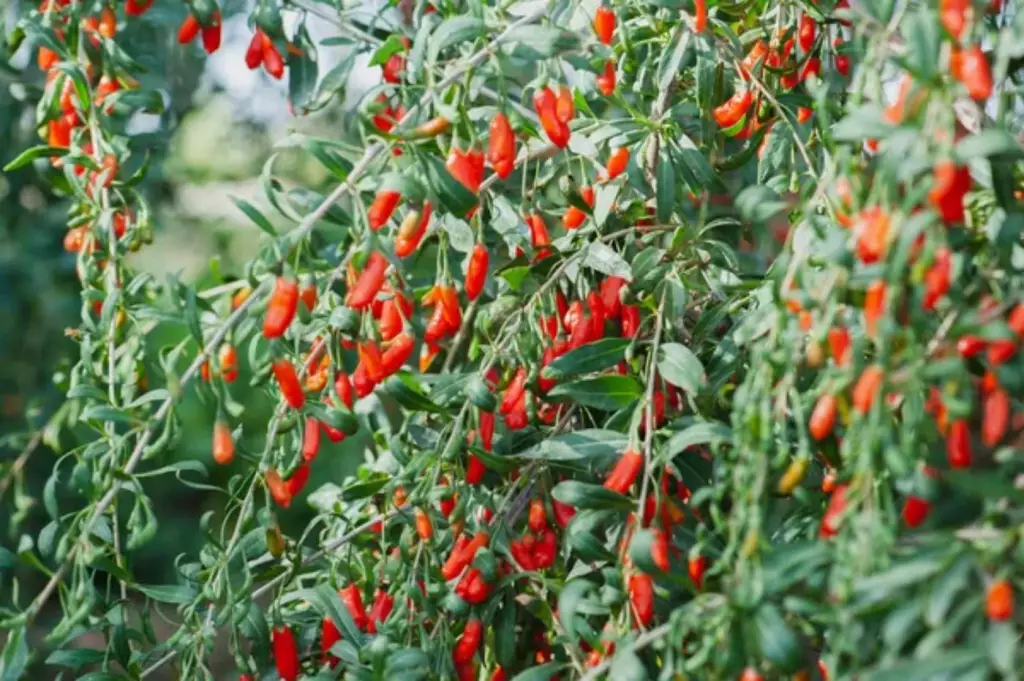
Lycium barbarum, commonly known as Duke of Argyll's Tea Tree, is a species of flowering plant in the nightshade family Solanaceae. This deciduous shrub is native to southeastern Europe and Asia, and it is widely cultivated for its edible berries and ornamental value.
The plant is characterized by its woody stems, which can reach up to 3 meters in height. It has small, trumpet-shaped purple or white flowers that bloom in the summer, followed by bright orange-red berries that ripen in the fall.
The berries are rich in nutrients and antioxidants, and they are often consumed fresh, dried, or juiced for their potential health benefits.
In traditional Chinese medicine, Lycium barbarum is believed to have anti-aging properties and is often referred to as a "superfood" due to its high nutritional content. The berries are also used in various herbal remedies and dietary supplements.
Melaleuca quinquenervia has broad leaves and papery bark
(Broad-leaved paperbark tea tree)

Melaleuca quinquenervia, commonly known as the broad-leaved paperbark, is a species of tree in the myrtle family, Myrtaceae. It is native to the eastern coast of Australia, New Guinea, and the Solomon Islands.
This tree is characterized by its distinctive papery bark, which peels off in thin layers, giving the tree its common name. The leaves are broad and lance-shaped, arranged alternately on the branches.
The tree produces creamy white bottlebrush-like flowers that are clustered at the ends of the branches, adding to its ornamental appeal.
In its natural habitat, M. quinquenervia is often found in swampy or waterlogged areas, where it plays a crucial role in stabilizing the soil and providing habitat for various species of wildlife.
Historically, Indigenous Australian communities utilized various parts of this tree for medicinal purposes, such as treating coughs and colds.
However, in some regions, M. quinquenervia has been introduced as an ornamental plant but has become invasive, outcompeting native vegetation and altering ecosystems. As a result, efforts are being made to manage and control its spread in certain areas to protect native biodiversity.
Melaleuca alternifolia has narrow leaves and papery bark
(Narrow-leaved paperbark)
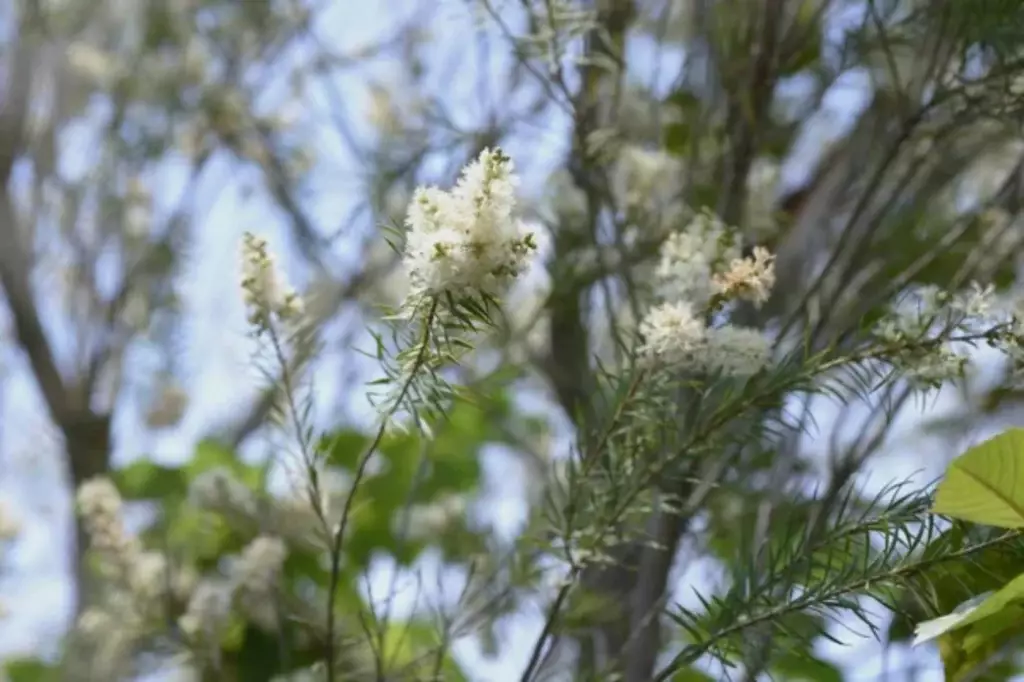
Melaleuca alternifolia, commonly known as narrow-leaved paperbark, is a small tree native to the coastal regions of New South Wales and Queensland, Australia. It is renowned for its essential oil, which is widely used for its medicinal and cosmetic properties.
Melaleuca alternifolia is a small tree with a bushy growth habit, reaching a height of 5-8 meters. It has narrow, pointed leaves and papery bark, which can easily be peeled off in thin layers.
The tree produces creamy-white bottlebrush-like flowers in summer. It is typically found in swampy or marshy areas, often near watercourses or wetlands.
Leptospermum madidum exhibits drooping branches giving the mourning appearance
(Weeping tea tree)
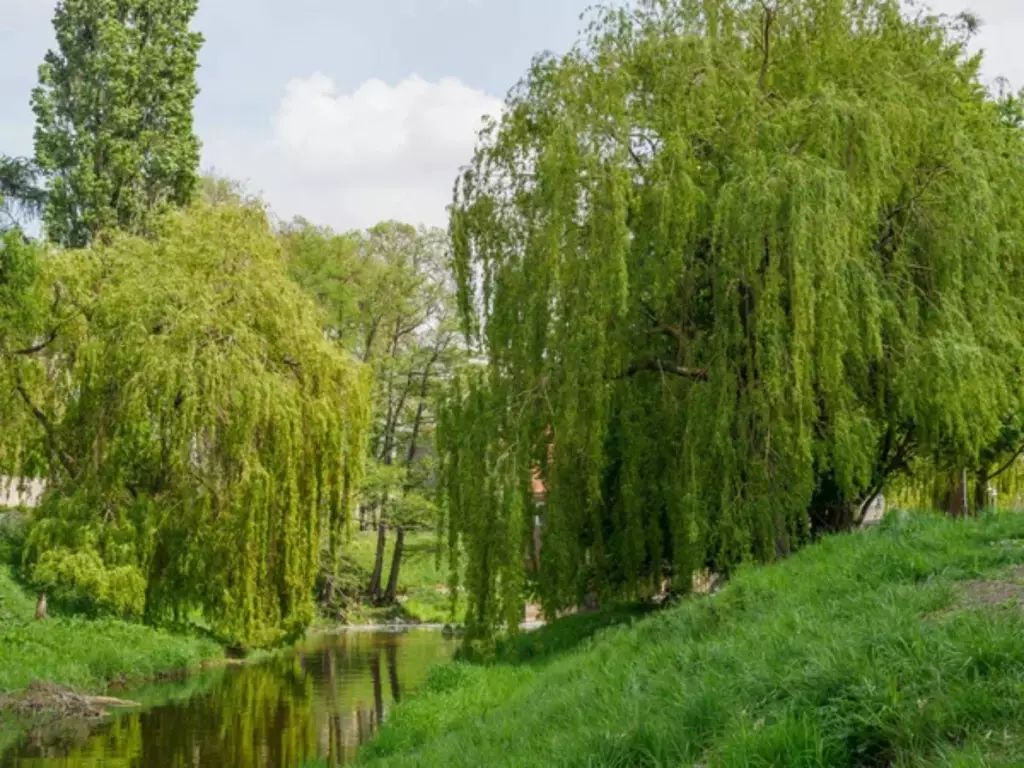
Leptospermum madidum, commonly known as the weeping tea tree, is a species of shrub or small tree native to Australia. The common name "Weeping tea tree" is a reflection of the plant's growth habit.
It exhibits drooping or cascading branches of the plant, which give it a graceful and somewhat mournful appearance. This characteristic makes it a popular choice for ornamental landscaping, especially in gardens and parks where its elegant form can be showcased.
The weeping tea tree typically grows to a height of 2-5 meters, although it can reach up to 10 meters under favorable conditions. It has a pendulous, spreading growth habit, with slender, arching branches that give it a graceful appearance. The foliage consists of small, narrow leaves that are aromatic when crushed, exuding a pleasant tea tree scent.
Leptospermum madidum is relatively low-maintenance and well-suited to a range of soil types, including well-drained sandy or loamy soils. Once established, it is reasonably drought-tolerant, although it benefits from occasional watering during dry periods.
Leptospermum polygalifolium helps produce the jelly bush honey
(Yellow tea tree)
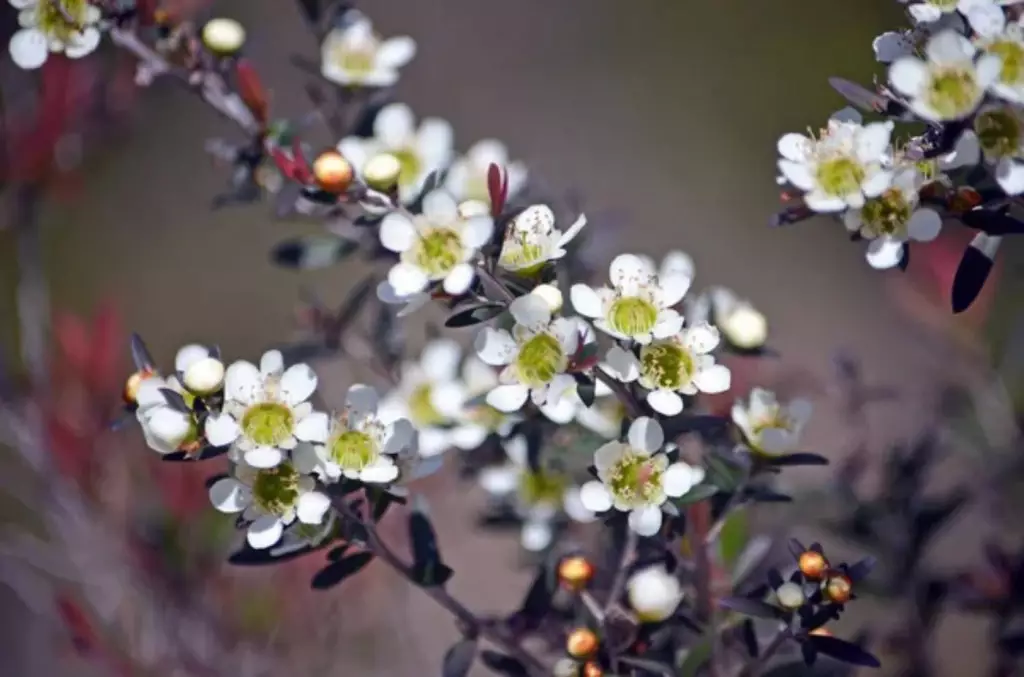
Leptospermum polygalifolium, also known as the jelly bush, is a species of shrub native to Australia. It belongs to the Myrtaceae family, which includes many well-known plants such as eucalyptus and tea tree.
The species is widely distributed across the eastern and southeastern parts of Australia, thriving in a variety of habitats including heathlands, woodlands, and forests.
One of the most notable features of Leptospermum polygalifolium is its remarkable ability to produce a unique type of honey known as jelly bush honey.
This honey is highly valued for its potential health benefits and medicinal properties. Research has shown that jelly bush honey contains high levels of antimicrobial compounds, making it effective in fighting bacteria and promoting wound healing.
In addition to its medicinal properties, the plant provides food and habitat for various native insects, birds, and other wildlife. Its flowers are attractive to bees and other pollinators, contributing to the biodiversity of the ecosystems in which it grows.
It is often cultivated for its attractive pink or white flowers, which bloom prolifically during the spring and summer months. The plant's dense foliage and compact growth habit make it suitable for use in landscaping, particularly in gardens designed to attract wildlife.
Leptospermum laevigatum has foliage often used as a windbreak
(Coast tea tree)
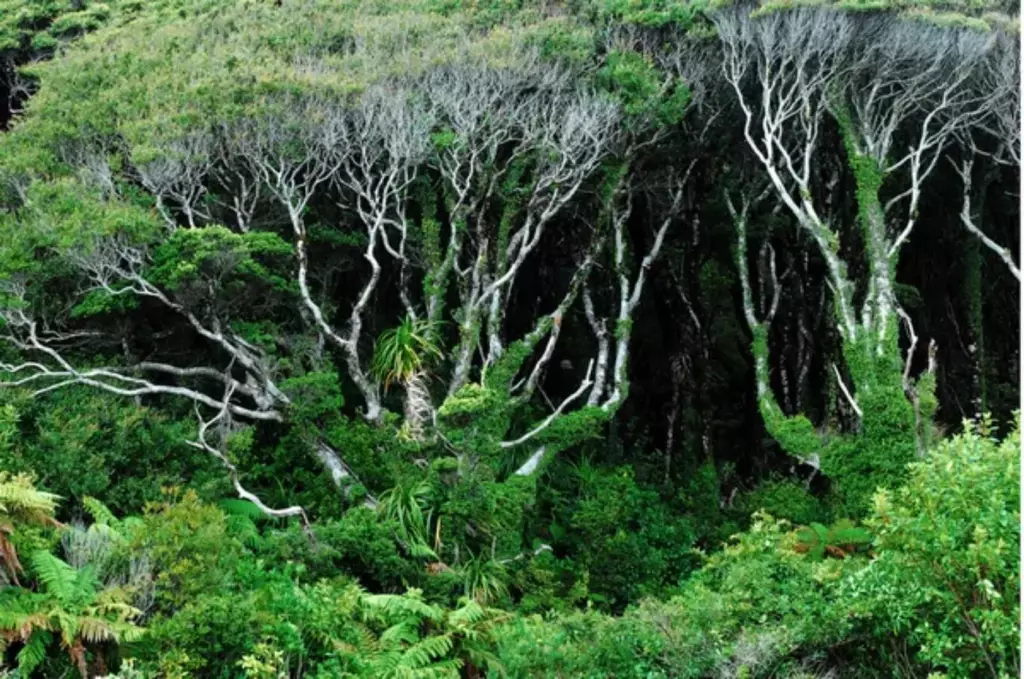
Leptospermum laevigatum, commonly known as the coast tea tree, is a species of shrub or small tree that is native to Australia. It belongs to the Myrtaceae family and is known for its hardiness and attractive features.
Coast tea tree is an evergreen plant with a bushy growth habit, reaching a height of up to 5 meters. It has small, narrow leaves that are dark green in color, and its branches are adorned with small white flowers, which add to its ornamental appeal.
This species is commonly found along the coastal regions of Australia, particularly in sandy or rocky soils. It is well-adapted to coastal conditions and is often used in landscaping to stabilize sand dunes and prevent erosion.
Due to its tolerance for coastal winds and salt spray, the coast tea tree is a popular choice for coastal landscaping and gardens. Its attractive foliage and flowers make it a desirable ornamental plant, and it is often used in hedging or as a windbreak.